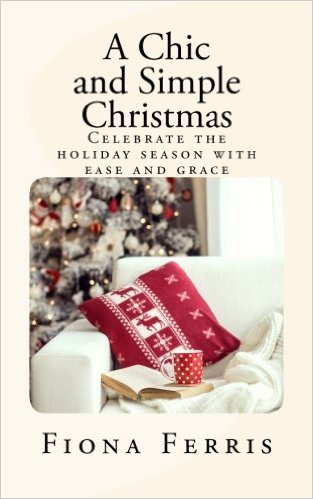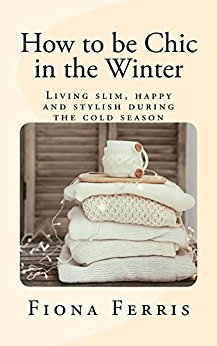Writing and Blogging Organization

I have been following Lauren’s beautiful and inspirational Instagram account An Organized Life for a while now, and I was thrilled when she approached me to contribute a guest post for the launch of her new online organizational business and blog.
Lauren asked me to share how I organize my writing and blogging. I would term myself ‘loosely organized’. As much as I’d like to be one of those people with a blogging calendar where you map out posts for the year, I am not.
For me, when I’ve tried to map myself out, I’d just forget to follow the plan, instead preferring to feel free to write about what I want to each week. That could change in the future, but it’s what I do for now (and have done for a while). In saying that, I do have a simple system that I have built upon for myself.
- Gather ideas as they come to me
- File them in their own Word documents (book titles/content ideas, blog post ideas etc)
- Choose one to focus on, excluding everything else
- Go, go, go until I complete it, then choose another project to get stuck into
Getting something out of my head and onto paper or the screen is where I start. I might save that idea as the beginnings of a blog post or I might go ahead and write a blog post there and then. Sometimes it will be a quote which will inspire a blog post. Sometimes an idea will literally pop into my head when I’m out walking and I can’t wait to start writing about it straight away.
My books start off with an exciting germ of an idea too, and then it grows from there. With books there is so much more space to explore a concept. I always have at least a dozen potential titles and ideas which, when I am ready to start something new, I browse and see which one ignites little sparks of anticipation inside me.
Too often I want to write two or even three books at the same time – I just can’t wait to get into them, but I discipline myself to choose one and focus on that. I can’t wait to finish writing the current book I am working on right now, because there are two others that I get ideas for that are champing at the bit to be written! But I simply use that as fire to help me complete the current book.
What starts this flow of ideas in the first place is the fact that I write all the time – I write on my laptop every day, I note down ideas when I think of them and I once even outlined a book on a road trip with my husband.
I didn’t plan to, but thank goodness I had a small journal in my handbag because ideas started coming to me. I brought out my journal every five minutes and noted down another point, then another and another until I gave up putting it away and left it on my lap for the entire five-hour journey. It turned out quite fun because my husband was contributing ideas too and we bounced things back and forth.
It’s really important to capture ideas as they come to you, because they will just as quickly disappear if you think ‘I’ll note that down later’.
It’s not all ‘I write when I’m inspired to’ though; I think it’s a combination of two things – you have to have the sparks of inspiration but you also have to be willing to put in the time, even when you don’t ‘feel like it’.
If I only wrote when I was truly fired up, I would probably not even have one book published on Amazon. Like anything, the novelty and enthusiasm of a new idea will start you off, but you have to have a good work ethic, believe in your idea and most important of all, not fall prey to the ‘I’m not good enough’ thoughts which can sabotage your work before you get there.
Often just starting to write will start the flow of ideas. That, or go for a walk around our neighbourhood. Walking gets my mind clicking and I end up sending myself emails with notes on my walk and save them when I get back. I used to use the voice recorder on my phone to dictate notes but I couldn’t be bothered typing them out when I got back so I gave that one up (one was twenty-five minutes long)!
Now, let’s get onto my process when I write.
Once I start outlining a book or writing a blog post, it goes into a Word document of its own. Because blog posts are one piece, they are kept in one document and once I publish it I delete the document. I prefer to write in Word rather than directly onto my blog.
How I write a book is slightly different because it’s a much bigger document. Whereas a blog post is 400-800 words, my books range from 25,000-65,000 words. At first I didn’t know how I would ever write that much to be able to create a book, but then I realised if I just broke it down, it was do-able.
To complete a short 20,000 word book, I had to write ten 2,000 word chapters.
With ‘Thirty Chic Days’, I had thirty distinct chapters that I came up with, then sat down to write each chapter. I researched the word-count of a full-length non-fiction book and then divided it by thirty. I wrote thirty chapters of 1,800-2,500 words each and the final word-count was just over 65,000 (including the introduction and a bonus chapter as well as the thirty chapters).
When you break it down like that, it suddenly seems like a goal you can achieve.
With my ‘Financially Chic’ book, I used a slightly different strategy. Motivational author and speaker Brian Tracy (one of my all-time favourites) has a good information on writing books.
I borrowed one of his methods for Financially Chic: Brian said to ‘Make a preliminary list of 50 thoughts, ideas, stories, methods, techniques and insights that you could include in your book. This list then becomes the outline of your plan to write your book’.
I did just that, and then grouped like ideas together and these naturally formed chapters. Then it was a matter of filling out the chapter titles and sub-titles. It’s quite fun to brainstorm a list of fifty ideas pertaining to the topic or title of your book.
I used that same strategy for both ‘A Chic and Simple Christmas’ and ‘How to be Chic in the Winter’ too.
If you have ever had a yearning to write a book, I would encourage you to get cracking. You can only write a book by writing, and the satisfaction gained is enormous. Having people read your book as well as earning some extra money when your book starts selling is the icing on the cake!
To finish, here are my top tips on how to organize your blogging and writing:
- Write down ideas when you think of them – don’t wait until later or the words will have disappeared, never to be found again. I have even gotten up in the middle of the night and written down phrases that came to me.
- Have your ideas organized – in one notebook or Word document, not on scraps of paper everywhere. You want to be able to find them again when you start your next project.
- Write a little bit every day – you will gain momentum, generate creative ideas and become more confident in your writing this way.
- Keep your workspace clean and tidy – it makes a huge difference to motivation.
- Become excited about what you are creating – excitement fuels everything!
- When ‘this isn’t any good’ pops into your head, ignore it and keep on writing. Of course you will want to make your writing as good as possible but that gremlin voice is with everyone, not just you. It will stop you achieving anything and it isn’t even real.
We are living in such a fantastic time where it is possible to share our message with the world, instantly and often for free; plus we are able to build a part- or full-time income for ourselves with blogging and writing. How fabulous is that?
All the best to you and your blog, and your future best-selling book. If you have any questions or would like me to clarify anything, you can leave a comment beneath this post, or email me: fiona@howtobechic.com
-Fiona-
Connect with Fiona
Fiona is the owner and writer of the blog howtobechic.com, and author of ‘Thirty Chic Days’, available on Kindle and in paperback on Amazon.
Fiona Ferris writes about living a simple, beautiful and inspired life at:





